The future of complement therapeutics
Complement is both evolutionary and scientifically old. It predates the adaptive immunity by some 600 million years and was first described in 1905 by Jules Bordet and Paul Ehrlich. For the most of
[...] Read more.
Complement is both evolutionary and scientifically old. It predates the adaptive immunity by some 600 million years and was first described in 1905 by Jules Bordet and Paul Ehrlich. For the most of its, the existence complement system has been ignored by most scientists and clinicians due to the perception of it being complicated and its relevance for the pathogenesis of human disease being unclear. With the recent US Food and Drug Administration (FDA) approvals of pegcetacoplan for both paroxysmal nocturnal haemoglobinuria (PNH) and geographic atrophy (GA), avacincaptad pegol for GA and iptacopan and danicopan for PNH, we are at a crucial juncture for complement-targeting therapies. A number of companies and academic institutions are developing next-generation complement therapies, which is resulting in an increasingly competitive landscape. If one looks at the serum complement cascade, all 3 pathways now have biotechnology or pharmaceutical industry players with 1 or multiple clinical-stage inhibitors that are expected to be FDA approved within the next few years. Furthermore, with the limited number of clinically validated targets in complement-mediated disease, the competition in this space is set to further intensify in the coming years. In this review, we will discuss the timeline of the academic discoveries that led to the development of the current crop of FDA-approved complement therapeutics. We follow with a discussion of an increasingly crowded complement therapy space and of the scientific advances that have emerged in recent two decades underpinning future innovation, including advances in our understanding of complement biology, such as local and intracellular complement, emerging complement targets, combinational approaches of complement and non-complement therapeutics to unlock new disease indications and new technologies such as gene therapy. We will also give a comprehensive overview of the gene therapy landscape and how it can be utilized to target complement dysregulation.
Martin Kolev ... Pascal Deschatelets
View:1366
Download:43
Times Cited: 0
Complement is both evolutionary and scientifically old. It predates the adaptive immunity by some 600 million years and was first described in 1905 by Jules Bordet and Paul Ehrlich. For the most of its, the existence complement system has been ignored by most scientists and clinicians due to the perception of it being complicated and its relevance for the pathogenesis of human disease being unclear. With the recent US Food and Drug Administration (FDA) approvals of pegcetacoplan for both paroxysmal nocturnal haemoglobinuria (PNH) and geographic atrophy (GA), avacincaptad pegol for GA and iptacopan and danicopan for PNH, we are at a crucial juncture for complement-targeting therapies. A number of companies and academic institutions are developing next-generation complement therapies, which is resulting in an increasingly competitive landscape. If one looks at the serum complement cascade, all 3 pathways now have biotechnology or pharmaceutical industry players with 1 or multiple clinical-stage inhibitors that are expected to be FDA approved within the next few years. Furthermore, with the limited number of clinically validated targets in complement-mediated disease, the competition in this space is set to further intensify in the coming years. In this review, we will discuss the timeline of the academic discoveries that led to the development of the current crop of FDA-approved complement therapeutics. We follow with a discussion of an increasingly crowded complement therapy space and of the scientific advances that have emerged in recent two decades underpinning future innovation, including advances in our understanding of complement biology, such as local and intracellular complement, emerging complement targets, combinational approaches of complement and non-complement therapeutics to unlock new disease indications and new technologies such as gene therapy. We will also give a comprehensive overview of the gene therapy landscape and how it can be utilized to target complement dysregulation.
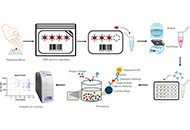 Durability of SARS-CoV-2 IgG response: a cross-sectional study in vaccinated healthcare workers using dried blood spot and multi-antigen profilingOpen AccessOriginal ArticleAim: Assessing severe acute respiratory syndrome coronavirus 2 (SARS-CoV-2) immunoglobulin G (IgG) antibodies among healthcare workers (HCWs) is crucial in understanding the durability of humoral [...] Read more.Imam Nurjaya ... Moh. Anfasa Giffari MakkarakaPublished: October 29, 2024 Explor Immunol. 2024;4:679–690
Durability of SARS-CoV-2 IgG response: a cross-sectional study in vaccinated healthcare workers using dried blood spot and multi-antigen profilingOpen AccessOriginal ArticleAim: Assessing severe acute respiratory syndrome coronavirus 2 (SARS-CoV-2) immunoglobulin G (IgG) antibodies among healthcare workers (HCWs) is crucial in understanding the durability of humoral [...] Read more.Imam Nurjaya ... Moh. Anfasa Giffari MakkarakaPublished: October 29, 2024 Explor Immunol. 2024;4:679–690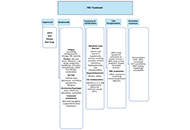 Primary biliary cholangitis, a rising health burdenOpen AccessReviewPrimary biliary cholangitis (PBC) is a rare immune-mediated disease, commonly affecting women in their 40s, and ultimately progressing to liver failure. The incidence and prevalence of the disease a [...] Read more.Mohamed Bassyouny Aboueleinin Elnaggar ... James Lorenzen BoyerPublished: October 29, 2024 Explor Immunol. 2024;4:658–678
Primary biliary cholangitis, a rising health burdenOpen AccessReviewPrimary biliary cholangitis (PBC) is a rare immune-mediated disease, commonly affecting women in their 40s, and ultimately progressing to liver failure. The incidence and prevalence of the disease a [...] Read more.Mohamed Bassyouny Aboueleinin Elnaggar ... James Lorenzen BoyerPublished: October 29, 2024 Explor Immunol. 2024;4:658–678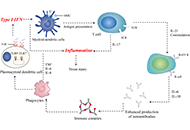 Epigenetic regulation of FOXP3 gene expression in relation to impaired function of regulatory T cells in systemic lupus erythematosusOpen AccessReviewThe impaired function of regulatory T (Treg) cells and the imbalance of Treg/Th17 cells play a central role in developing autoimmune diseases such as systemic lupus erythematosus (SLE). Treg cells a [...] Read more.Parnian Fakour ... Ghasem SolgiPublished: October 21, 2024 Explor Immunol. 2024;4:640–657
Epigenetic regulation of FOXP3 gene expression in relation to impaired function of regulatory T cells in systemic lupus erythematosusOpen AccessReviewThe impaired function of regulatory T (Treg) cells and the imbalance of Treg/Th17 cells play a central role in developing autoimmune diseases such as systemic lupus erythematosus (SLE). Treg cells a [...] Read more.Parnian Fakour ... Ghasem SolgiPublished: October 21, 2024 Explor Immunol. 2024;4:640–657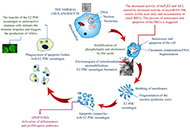 Mechanism of formation and significance of antimitochondrial autoantibodies in the pathogenesis of primary biliary cholangitisOpen AccessReviewPrimary biliary cholangitis (PBC) is a chronic cholestatic progressive liver disease associated with cholangiopathies. The detection of antimitochondrial autoantibodies (AMAs) plays an important rol [...] Read more.Vasiliy Ivanovich Reshetnyak, Igor Veniaminovich MaevPublished: October 18, 2024 Explor Immunol. 2024;4:624–639
Mechanism of formation and significance of antimitochondrial autoantibodies in the pathogenesis of primary biliary cholangitisOpen AccessReviewPrimary biliary cholangitis (PBC) is a chronic cholestatic progressive liver disease associated with cholangiopathies. The detection of antimitochondrial autoantibodies (AMAs) plays an important rol [...] Read more.Vasiliy Ivanovich Reshetnyak, Igor Veniaminovich MaevPublished: October 18, 2024 Explor Immunol. 2024;4:624–639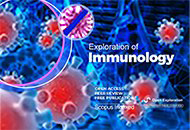 Long-chain noncoding RNA NEAT1 and autoimmune diseasesOpen AccessMini ReviewAutoimmune diseases result from the immune system’s response to autoantigen components, leading to damage to one’s own tissues and organs. The correlation between long noncoding RNAs (lncRNAs) a [...] Read more.Cheng Bao ... Hong-Wei ChenPublished: October 18, 2024 Explor Immunol. 2024;4:616–623
Long-chain noncoding RNA NEAT1 and autoimmune diseasesOpen AccessMini ReviewAutoimmune diseases result from the immune system’s response to autoantigen components, leading to damage to one’s own tissues and organs. The correlation between long noncoding RNAs (lncRNAs) a [...] Read more.Cheng Bao ... Hong-Wei ChenPublished: October 18, 2024 Explor Immunol. 2024;4:616–623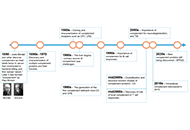 The future of complement therapeuticsOpen AccessReviewComplement is both evolutionary and scientifically old. It predates the adaptive immunity by some 600 million years and was first described in 1905 by Jules Bordet and Paul Ehrlich. For the most of [...] Read more.Martin Kolev ... Pascal DeschateletsPublished: October 18, 2024 Explor Immunol. 2024;4:577–615
The future of complement therapeuticsOpen AccessReviewComplement is both evolutionary and scientifically old. It predates the adaptive immunity by some 600 million years and was first described in 1905 by Jules Bordet and Paul Ehrlich. For the most of [...] Read more.Martin Kolev ... Pascal DeschateletsPublished: October 18, 2024 Explor Immunol. 2024;4:577–615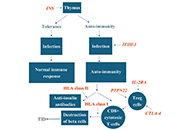 A review of the genetics of type I diabetesOpen AccessReviewType I diabetes susceptibility is caused by both environmental and genetic factors, the latter comprising approximately half of the total risk as evidenced by the fact that identical twins have appr [...] Read more.Brian D. TaitPublished: September 25, 2024 Explor Immunol. 2024;4:568–576
A review of the genetics of type I diabetesOpen AccessReviewType I diabetes susceptibility is caused by both environmental and genetic factors, the latter comprising approximately half of the total risk as evidenced by the fact that identical twins have appr [...] Read more.Brian D. TaitPublished: September 25, 2024 Explor Immunol. 2024;4:568–576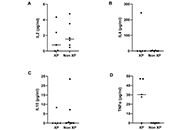 Proinflammatory cytokines in xeroderma pigmentosum (XP) and non-XP cancer patients—a pilot studyOpen AccessOriginal ArticleAim: Testing the feasibility of the determination to what extent the inability to repair DNA lesions in xeroderma pigmentosum (XP) patients, contributes to the alteration of immune responses, in [...] Read more.Kalthoum Abid ... Hamouda BoussenPublished: September 04, 2024 Explor Immunol. 2024;4:557–567
Proinflammatory cytokines in xeroderma pigmentosum (XP) and non-XP cancer patients—a pilot studyOpen AccessOriginal ArticleAim: Testing the feasibility of the determination to what extent the inability to repair DNA lesions in xeroderma pigmentosum (XP) patients, contributes to the alteration of immune responses, in [...] Read more.Kalthoum Abid ... Hamouda BoussenPublished: September 04, 2024 Explor Immunol. 2024;4:557–567 Exploration of Immunology: immunology through the agesOpen AccessEditorialCalogero CarusoPublished: September 01, 2024 Explor Immunol. 2024;4:554–556
Exploration of Immunology: immunology through the agesOpen AccessEditorialCalogero CarusoPublished: September 01, 2024 Explor Immunol. 2024;4:554–556